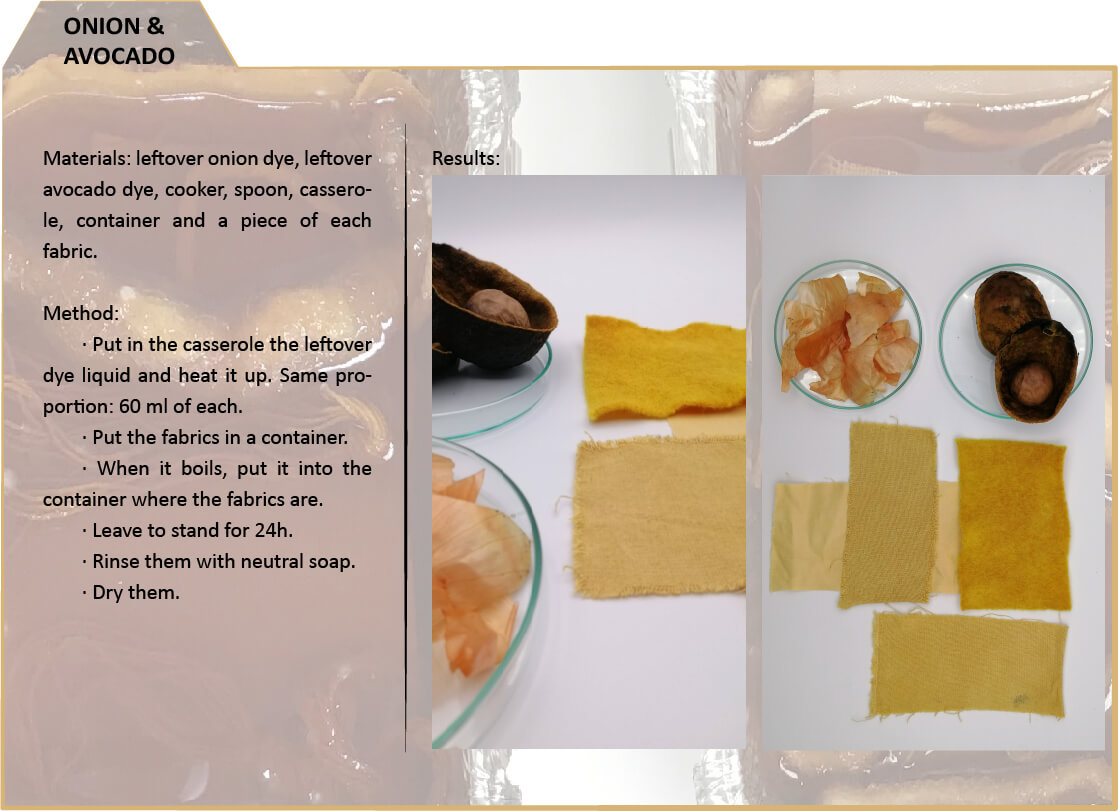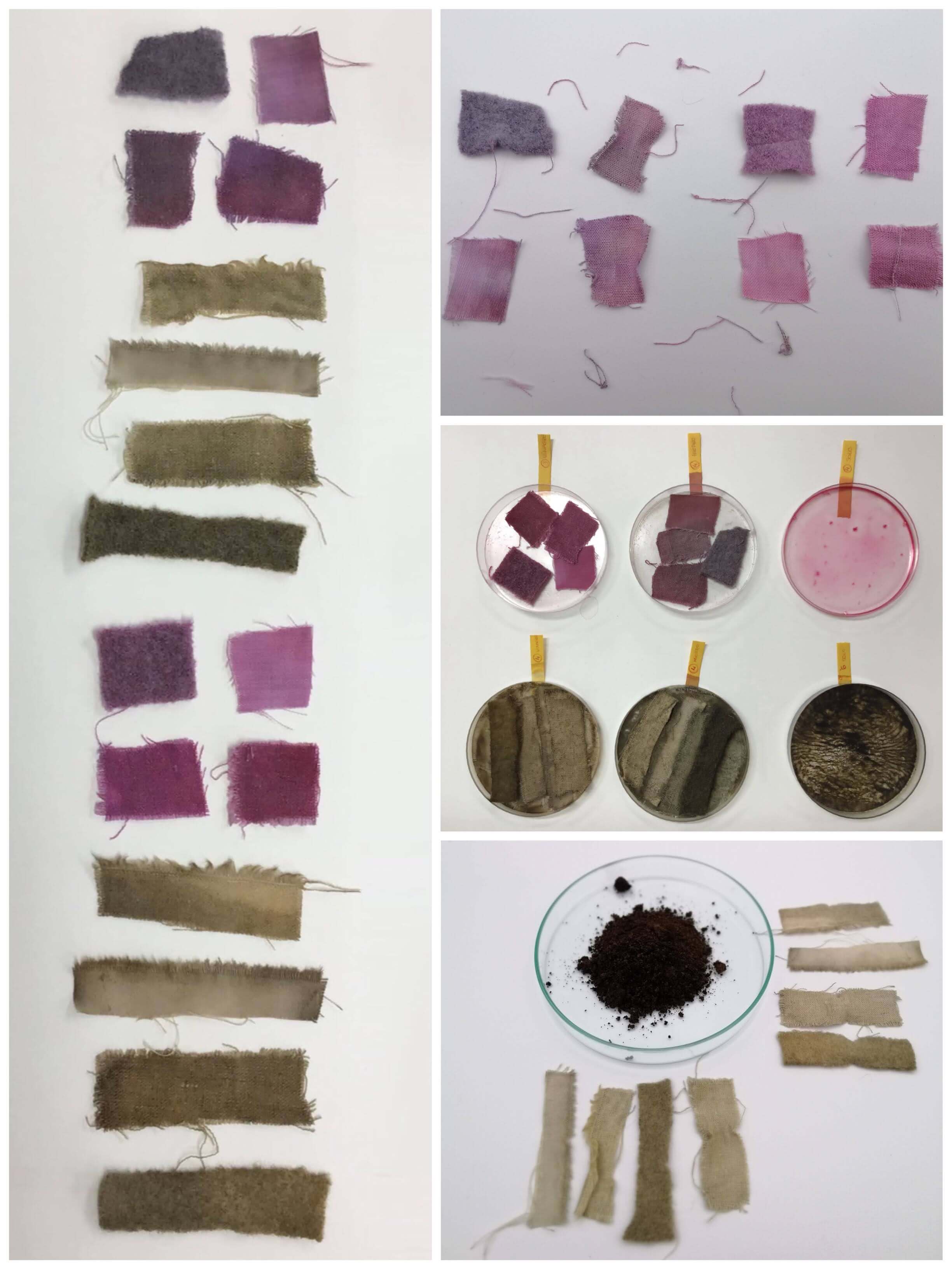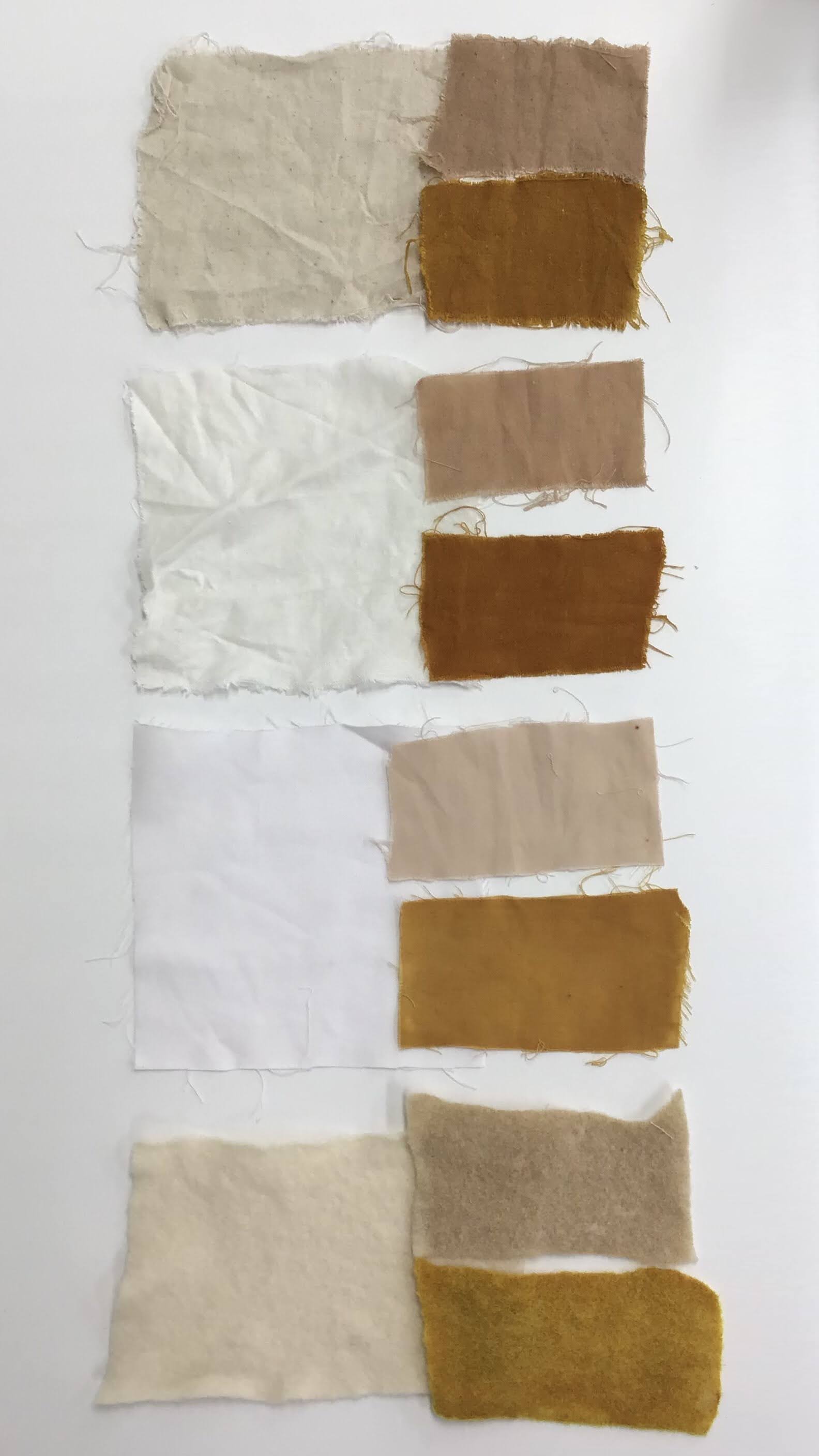4 | Biochromes¶
“COLOURS CAN SIGNIFICANTLY AFFECT MOOD, FEELINGS, AND EMOTIONS, WHETHER SOMEBODY IS CONSCIOUSLY AWARE OF IT OR NOT.” - Sophia Hansen.
I want to start by showing you a therapy based on the use of colours: chromotherapy.
Chromotherapy is an ancient technique (more than 5.000 years) which uses the colour to cure ailments and illnesses. It’s a non-invasive therapy, with no side effects and no toxic substances.
So, what better way to create colours using natural resources for our own good. This process is called Biochrome.
We had the opportunity to visit Wül, a textile art and multidisciplinary natural fiber studio. Each product is made by botanical printing and natural dyes obtaining something unique.
 Photos taken from its Facebook page.
Photos taken from its Facebook page.
Dictionary¶
- WOF: Weight Of Fibers.
- Mordant: It is a substance, typically an inorganic oxide, which is combined with a dye bath to enhance the fastening process of the dye onto organic fibers. Alum, iron and copper.
- Solvent: It is a substance that is able to extract the colour of something. Ethanol, alcohol, water...
- Scouring agents: It is a substance which cleans the fibers, removing waxes and oils present in them. Sodium Carbonate.
- Natural dyes: It is liquith bath.
- Natural inks: It is a dense liquid.
Fabric preparation¶
It’s important to separate the natural fabric from the animal ones, because they need different types of scouring.
First of all, it’s necessary to weight the fibres separately by their type of origin.

Vegetal fabric¶
WOF: 428,53g
Material: water, carbonato, spoon, weigher, casseroles and pots.
Proportion: 2 spoons of carbonato for 4-5L of water. We needed 9L of water, so we used 3,5 spoons.
Method:
1.Washing
-
Boil the water and add the fabrics. We left them boiling for an hour.
-
Rinse the fibres with warm water.
-
Put on some towels to dry them.
2.Mordant
-
Mix 15% of WOF ( in our case, 296,8g of carbonato) with water.
-
Dissolve it in warm water.
-
Add the fabrics and mix with the previous dissolution.
-
Rinse and dry them.
Animal fabric¶
They don’t need any special treatment, so we just cleaned them with neutral soap and warm water.
Natural dye¶
Natural Dyeing is the process of using natural dyes that are extracted from natural sources, such as plants, minerals and wate of food.
Onion¶

Avocado skins and pits¶

¶
Here you can see the difference in colour between the original and dyed fabrics.
Onion & avocado¶

Gradient technique¶
I wanted to achieve a gradient in the fabrics. Probably, I had seen this technique before, because the idea came to me right away.
It consists of putting the dye liquid, in this case the avocado dye, in a container. I filled it 1/4. Then, I rolled up the fabric and I put them inside. I let it rest for 1 day and these were the results:

Natural inks¶
An ink is a coloured liquid that is absorbed by, but not bonded to the surface.
In both cases, I used iron solution. To make it you need to mix 100mL of warm water per one spoon of iron.
Coffee ink¶

Blueberry¶

Inks & fabrics¶
I put different types of pieces of fabric in the ink waste of each ink. I dried for 4 days and then I washed them with neutral soap.
The fabrics had been prepare before, as I explained in Fabric preparation chapter.
And those were the results:

Biochrome swatches¶

